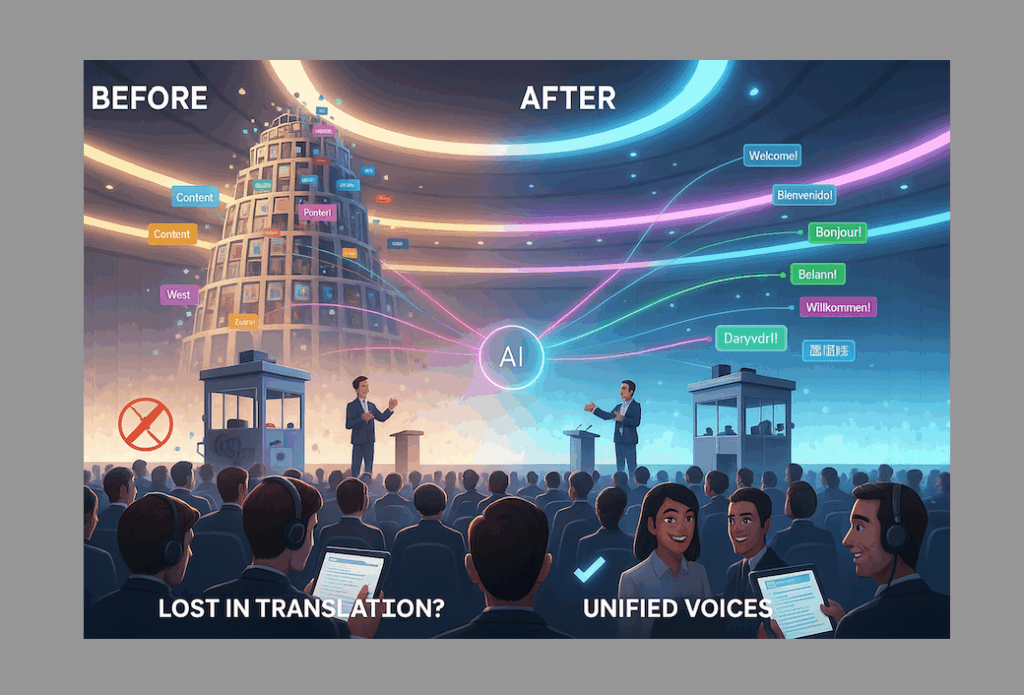With 5 million users and clients like IMEX America, the company’s AI translation tool is redefining inclusivity, one caption at a time
In the business of meetings, the new lingua franca is… every language.
That’s the message behind Wordly’s latest move—a major global expansion that signals how fast AI translation is transforming the way audiences connect. The Los Altos–based company, which made this year’s Inc. 5000 list of fastest-growing private companies, has doubled its team across engineering, product development, and customer success to meet skyrocketing demand from the events and trade show industry.
“AI translation is changing what’s possible for events,” said Lakshman Rathnam, Wordly’s founder and CEO. “By expanding our team and global reach, we’re helping organizers welcome attendees from anywhere in the world while making every meeting, conference, and trade show more inclusive and accessible.”
The company’s platform provides real-time translation and captioning in more than 60 languages—without interpreters or headsets. Attendees simply open a browser or app on their own device to follow every session in their preferred language.
It’s a deceptively simple fix to a problem that’s been growing louder. According to the 2024 Wordly AI Translation Research Report,
79% of organizers say more attendees now speak a language other than English.
88% report two or more languages being spoken at their events.
70% already offer live interpretation or captioning, and 77% plan to expand it.
96% say AI translation delivers higher ROI than human translation—saving time, cutting costs, and simplifying logistics.
And perhaps most tellingly, 95% say translation quality has significantly improved in just the past year.
The Multilingual Moment
Wordly’s expansion is both a business move and a bellwether. With its global customer base—4,000 organizations and 5 million users across 60 countries—the company is serving a meetings landscape that’s no longer content with one-size-fits-all communication.
The shift isn’t just logistical; it’s cultural. As audiences become more international and hybrid events blur physical borders, language has become the last real barrier to participation. Wordly’s technology is tearing that down.
“Event professionals are reimagining what it means to connect global audiences,” Rathnam said. “With AI translation, they’re reaching more people and ensuring everyone can participate and engage.”
Major conferences are already on board. The European Association for Osseointegration, IMEX America, and CEATEC have all deployed Wordly’s platform to expand audience reach for keynotes and breakouts—without the cost and complexity of traditional translation services.
AI With an Accent on Accessibility
For incentive organizers, association planners, and corporate event teams, Wordly’s rise is more than a tech story—it’s a preview of what inclusivity looks like in the AI era.
As planners wrestle with tightening budgets, hybrid logistics, and rising global expectations, tools like Wordly offer a rare triple win: lower cost, higher engagement, and a broader audience.
In the same way live streaming and event apps became standard after the pandemic, AI translation now seems destined to follow suit. If Wordly’s expansion is any indication, the future of events won’t just be hybrid—it’ll be multilingual by default.
Any thoughts, opinions, or news? Please share them with me at vince@meetingsevents.com.
Photo by ChatGPT.com





